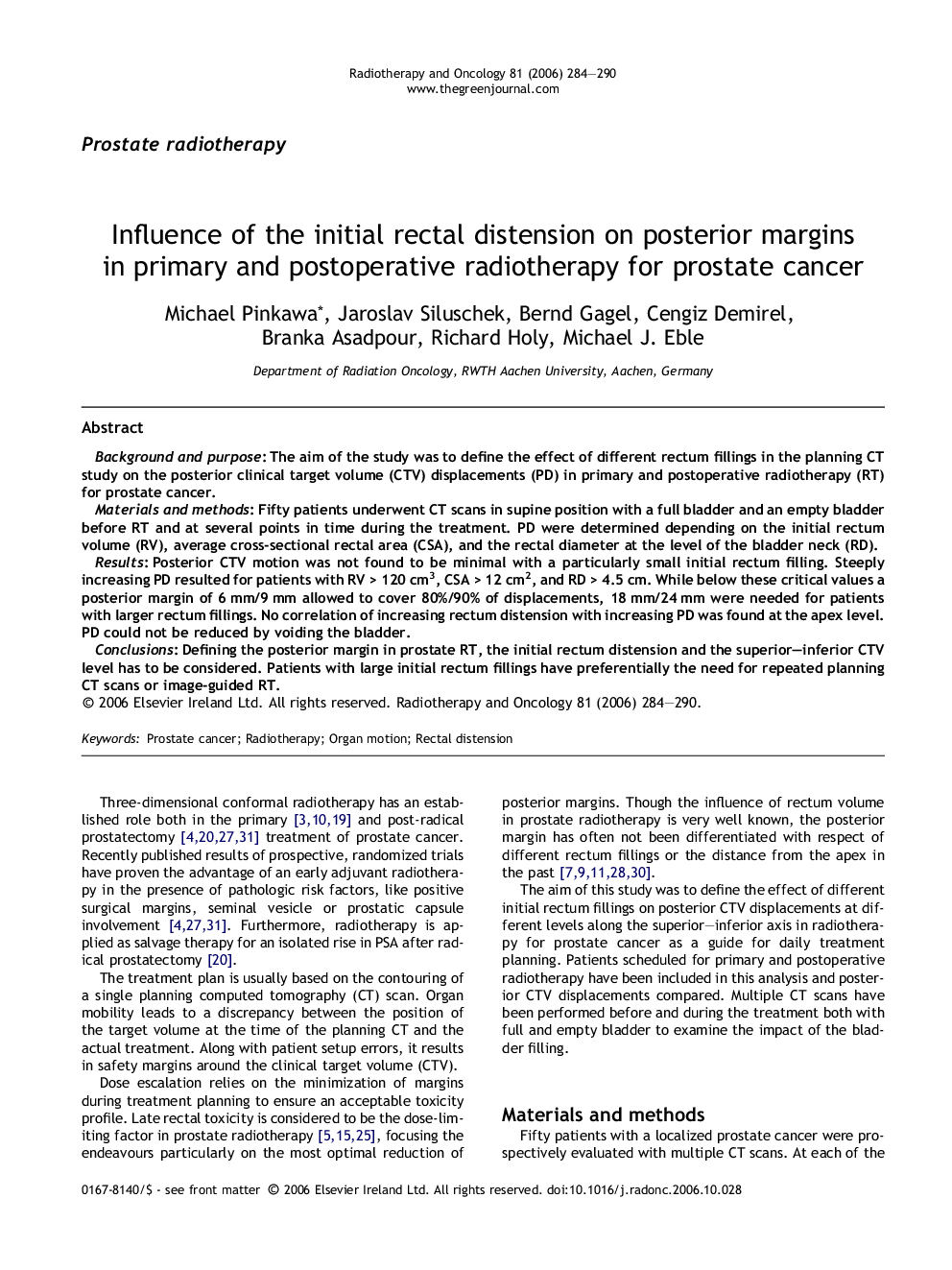| Article ID | Journal | Published Year | Pages | File Type |
|---|---|---|---|---|
| 2161160 | Radiotherapy and Oncology | 2006 | 7 Pages |
Background and purposeThe aim of the study was to define the effect of different rectum fillings in the planning CT study on the posterior clinical target volume (CTV) displacements (PD) in primary and postoperative radiotherapy (RT) for prostate cancer.Materials and methodsFifty patients underwent CT scans in supine position with a full bladder and an empty bladder before RT and at several points in time during the treatment. PD were determined depending on the initial rectum volume (RV), average cross-sectional rectal area (CSA), and the rectal diameter at the level of the bladder neck (RD).ResultsPosterior CTV motion was not found to be minimal with a particularly small initial rectum filling. Steeply increasing PD resulted for patients with RV > 120 cm3, CSA > 12 cm2, and RD > 4.5 cm. While below these critical values a posterior margin of 6 mm/9 mm allowed to cover 80%/90% of displacements, 18 mm/24 mm were needed for patients with larger rectum fillings. No correlation of increasing rectum distension with increasing PD was found at the apex level. PD could not be reduced by voiding the bladder.ConclusionsDefining the posterior margin in prostate RT, the initial rectum distension and the superior–inferior CTV level has to be considered. Patients with large initial rectum fillings have preferentially the need for repeated planning CT scans or image-guided RT.
